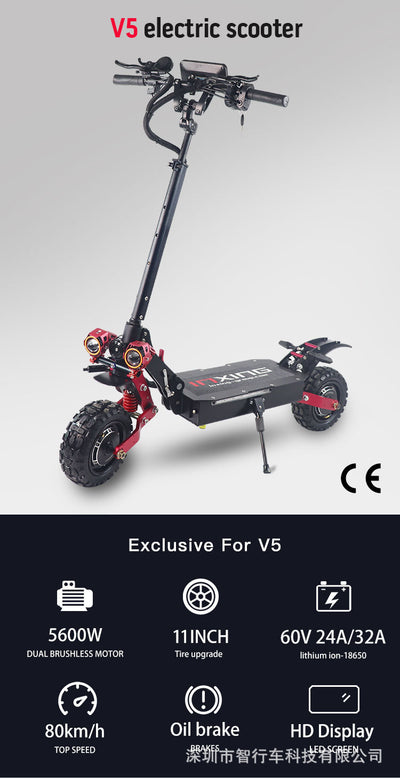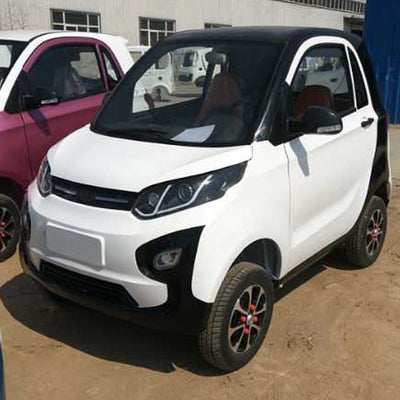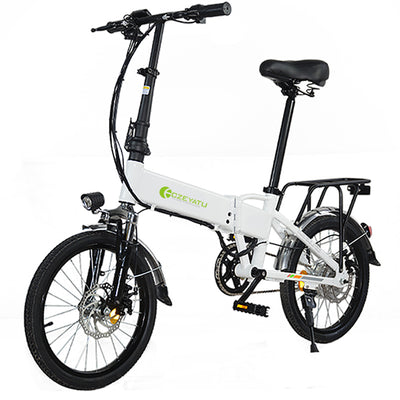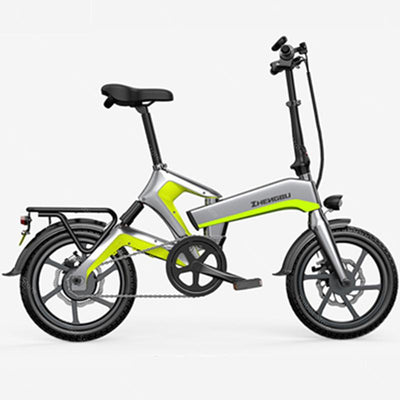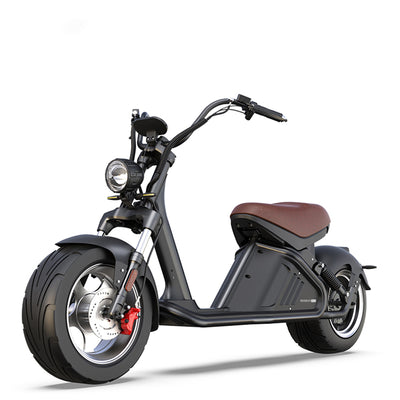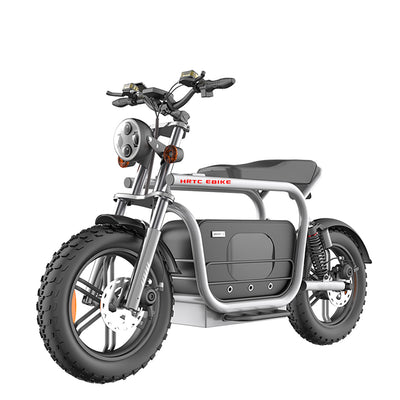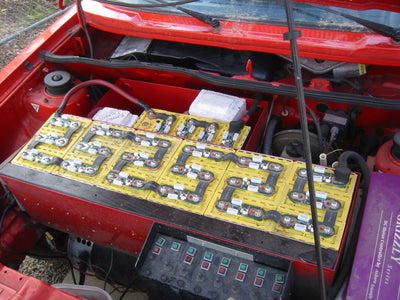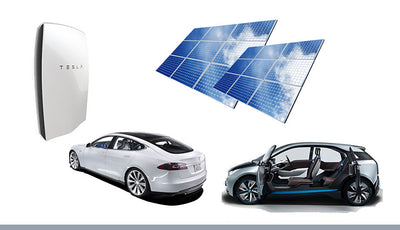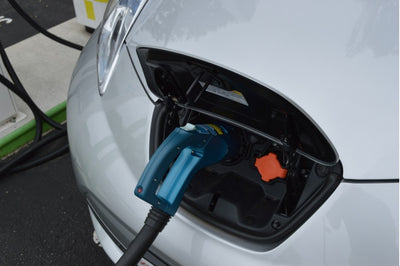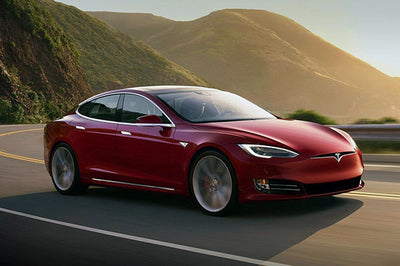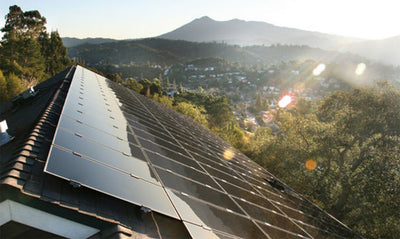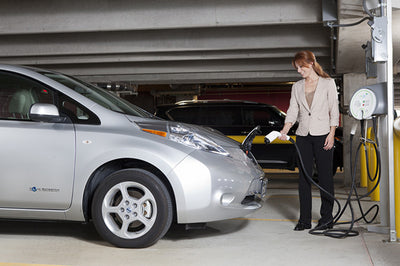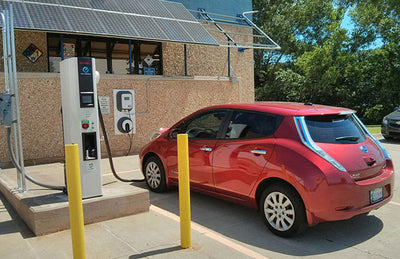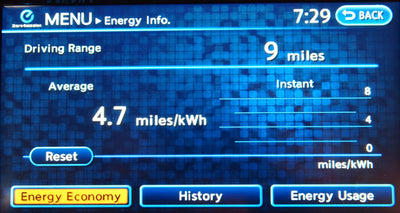Electric Vehicles and the Smart Grid
Posted by Tom Lee on
Electric vehicles represent an invaluable resource to the American electricity system, especially as it transitions into the ultimate vision of a so-called “Smart Grid.” Far from being a risk or a burden on our electrical system, EVs are a massive storage resource waiting in the wings—ready to provide valuable new services and reduce costs for grid operators, utilities, and ratepayers alike.
You’ve probably heard the term “Smart Grid,” but what is it? The Smart Grid is a next-generation electricity network equipped with communications and control systems. Those added controls make it possible to efficiently and dynamically manage energy supply and demand. The key is to be able to fine-tune how much energy is generated, and how much energy is needed at any given moment. An electric vehicle is critical because it can communicate with the grid, and respond to calls for storing and discharging energy.
Technologies that play a role in the Smart Grid can be grouped as follow:
- Smart meters, which automatically relay detailed energy consumption data back to the utility at regular intervals, and may even respond to remote control signals.
- Grid sensors, distributed throughout grid infrastructure and feeding information on, for example, transformer health and distribution efficiency back to their owners and operators.
- Responsive appliances and consumer equipment that can respond to signals from the grid to change their power consumption. Put EVs in this bucket.

Grid electrical frequency, as explained by LBNL/FERC using the analogy of water level in a container. The electrical frequency must be maintained at or near 60 Hz in the US, often referred to as “regulation.” Diagram courtesy of LBNL/FERC, in a 2010 report on frequency response metrics.
Electric Cars: The Ultimate Responsive Appliance
The word “appliance” is usually pejorative when applied to a car—meaning that a vehicle lacks sex appeal. But in the context of the Smart Grid, it’s very useful that EVs are considered a type of electric appliance.
Examples of responsive appliances include fridges that switch on and off in response to changes in the grid electrical frequency, or air conditioning units that cycle during peak hours to reduce strain on scarce supplies. But arguably the most valuable, and certainly the largest, responsive appliance is the electric vehicle. While most responsive appliances present small loads and have limited capacity to buffer their use (a fridge can’t stay off forever), the typical EV has a power rating exceeding many home A/C units and can store as much as three days’ worth of a typical home’s energy consumption.
EVs are well suited to the Smart Grid for a number of reasons:
- They have ample energy storage
- They present easy access for control signals
- They are geographically dispersed
Once connected to the Smart Grid and operated as grid resources, EVs can soak up excess energy, pump in extra power, and help maintain a reliable flow of electricity.

The EV aggregator model: PlugShare supplies ancillary services to the grid via remote control optimization of EV charging, smoothly and efficiently integrating with other sources of generation and demand on the grid.
PlugShare (from Recargo, Inc., the company behind PluginCars.com) is an app that communicates with electric vehicles and the grid to supply key energy services like demand response and “renewables following.” In other words, PlugShare plays a role in the remote control and optimization of EV charging so that it’s integrated with other aspects of energy generation and demand.
PlugShare works closely with utilities, drivers and fleets to deploy custom hardware and software to link electric vehicles to the PlugShare Grid network. Once connected, the charging patterns of these vehicles can be adjusted to ensure that charging is only taking place when the grid can best support it, or when the highest percentage of renewable energy is available on the system. This keeps costs down for drivers, saves utilities on wear to the transformers and wires, and reduces the need to bring online expensive and polluting “peaker” generating plants at times of high demand.
It also helps grid operators use more renewable energy: California, for example, has a glut of solar energy in the middle of the day, and PlugShare Grid can shift charging patterns to use some of that energy that would otherwise go to waste. A nice bonus is that this means your EV can truly be a zero emissions vehicle.
Storage and the Grid
The ability to store energy is incredibly useful to the grid. When too much energy is being produced—as is often the case early in the morning in California, with huge amounts of wind energy and little demand for it—having storage means energy can be pulled off the grid and reserved for use at later peak times. When there is too little energy to meet needs in a particular location, electricity can flow out of storage and onto the grid.
The flow of energy into and out of storage can also support basic operations of the grid, like maintaining the electrical frequency of the system so critical to overall stability.
Despite the value of storage, even the most advanced electrical grids typically have very little of it. Battery storage—in stationary battery packs—is expensive and technically challenging to build at a large scale. For example, valley sites for dams used for pumped storage—where energy is used to move water uphill, for release downhill through turbines when needed—are rare. Consequently, there is a large and mostly unmet need for more energy storage.
EVs to the Rescue
Consider this: when an electric vehicle is plugged into the Smart Grid, the network doesn’t “care” about its make or model, visual design or zero-to-60 performance. To the Smart Grid, the vehicle is nothing more than a unit of storage with a given charge and discharge rate.
Compared with the consumption of the energy grid, a single EV battery has a tiny capacity and is best suited to providing backup power to a household, or buffering energy from rooftop solar panels. But think about what happens when there are millions of new EVs on the road, as we fully expect in the next decade. When they arrive, electric vehicles will suddenly become a powerful force in the Smart Grid—the energy storage mechanism so desperately needed.

EV sales targets for select Electric Vehicle Initiative countries. (Graph courtesy of the Electric Vehicle Initiative and the IEA’s Global EV Outlook Report 2013.)
Given reasonable projections, our collective EV battery capacity could store enough energy to meet nearly 20 percent of peak demand for electricity by 2020. With this kind of capacity, EVs could entirely replace traditional generation as the main source of ancillary services, the essential maintenance functions that keep our supply of electricity stable and reliable. This means that instead of having expensive gas-fired power plants throttling their turbines up and down to keep supply and demand balanced, millions of EVs aggregated into a seamless and responsive whole could provide this same service for a fraction of the cost. The value of those services is pegged at more than $10 billion a year.
The role of the electric vehicle in the Smart Grid doesn’t stop at grid services. EVs could:
- Be an emergency power source for millions of households at risk of power failure due to natural disasters.
- Help reduce wear and tear on the electric grid by easing congestion at peak times.
- Play an important role in the emerging microgrids associated with other distributed energy sources like rooftop solar.
Costs, Benefits and Barriers
Widespread deployment of EVs on the Smart Grid will, however, not be easy:
- Investment is needed in vehicle control and aggregation, so that millions of vehicle charging patterns can be safely and quickly adjusted to meet grid needs.
- We need to tweak wholesale electricity markets so that they are more welcoming to small, distributed storage resources like EVs.
- We need to create open, transparent, accessible demand response markets at the local level so that we can pay EV drivers in return for managing their charging.
- We need more charging stations that allow two-way energy flows (like DC fast charging), and updated software and hardware on new vehicles to enable two-way energy flows regardless of where you’re charging.
- The relationship between the driver and the grid needs to be carefully and respectfully developed.
Technologically, we can do this today. Numerous projects, many using production vehicles, have demonstrated the viability of vehicle-to-grid (V2G) power, and with a few tweaks to software, most existing vehicles can do V2G at DC fast charging stations. These models can still, of course, provide valuable grid services via charging control, but the full value of vehicle-grid integration can only be harnessed by two-way power flows.
Institutionally, we face more significant obstacles. Utilities and grid operators have established business and operating models that are generally not compatible with the vision of millions of EVs plugged in and providing valuable grid services.
Finally, there remain challenges in balancing the needs of vehicle owners with the needs of the grid. The bottom line: drivers should never see their driving and ownership experience impacted by the behind-the-scenes role the EV plays in the emerging Smart Grid.
We’re already seeing novel deployments of electric vehicles in support of the grid. While these projects are currently rare, the rapid growth in EV ownership will soon change the Smart Grid picture. With millions of mobile storage devices (a.k.a. electric vehicles) hooked into a dynamic, adaptive electrical grid, we can lower costs for operators and ratepayers, clean up power generation, and put money into the pockets of drivers.



